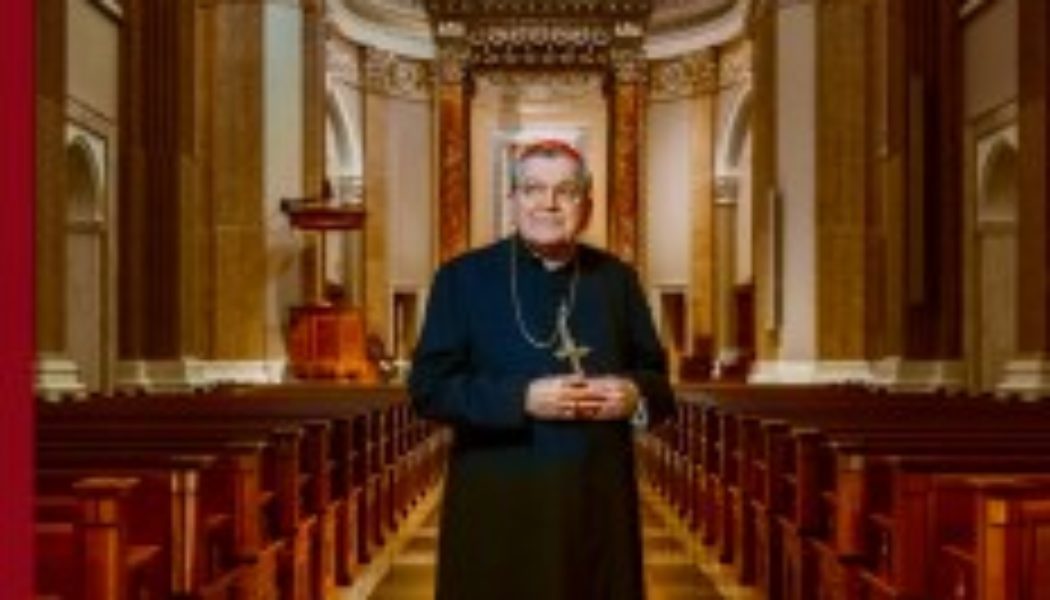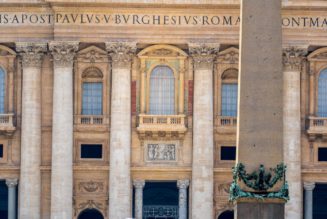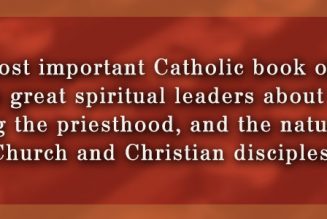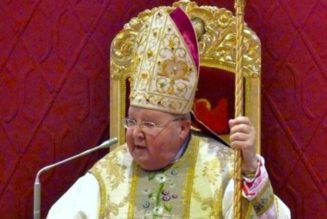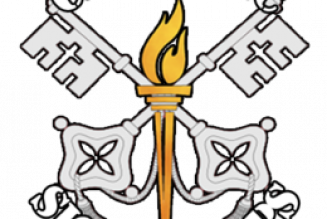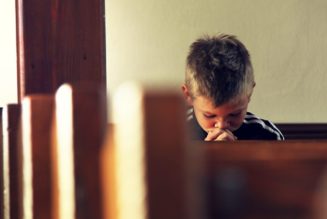Our Blessed Mother’s appearances and message at Tepeyac show God’s love and mercy as much to us today as she did almost 500 years ago. It is a loving appearance and message for which we all hunger and which can draw us all to the fount of life and grace in our Lord Jesus Christ.
I have recently finished a new book about the Shrine of Our Lady of Guadalupe at La Crosse, Wisconsin. The book is titled The Shrine of Our Lady of Guadalupe and is available for pre-order on August 22, the Memorial of the Queenship of Mary. It will be officially released on October 7, the Memorial of Our Lady of the Rosary.
***
The Shrine of Our Lady of Guadalupe, by Raymond Leo Cardinal Burke (Flores Mariae, 2024, 212 pages)
All that my family gave to me came with me as I entered the diocesan minor seminary, Holy Cross Seminary in La Crosse, Wisconsin, in the Fall of 1962, which coincided with the beginning of the first session of the Second Vatican Ecumenical Council.
At that time, the seminary was filled to overflowing with seminarians. Upon entering, I was issued a personal copy of the Liber Usualis so that some hours each week could be devoted to perfecting the singing of Gregorian Chant, especially to learning the proper chants for each Sunday and Feast.
Those early years of seminary formation seemed like a time of tranquility. Yet within five years, the seminary underwent, in a particularly devastating manner, the crisis which the Church experienced during the first years of the implementation of the teachings of the Second Vatican Ecumenical Council. The implementation sadly took a very man-centered approach, with many strange ideas about making the Liturgy “interesting.” (It almost seems blasphemous to me to say that we need to make the Liturgy interesting. What could be more interesting in itself and more compelling than the knowledge that the Sacred Liturgy is the gift of God’s own encounter with us?) Many seminarians abandoned the praying of the Rosary, saying that this was the type of prayer Our Lord condemned as “rattling on” (Mt 6, 7), or that, if you prayed the Rosary, you did not have a proper appreciation for the Mass and for the other liturgical actions of the Church. The Liber Usualis was also suddenly and totally abandoned, and Gregorian Chant was replaced, in great part, by songs developed according to the standards of popular music and accompanied by the guitar and percussion instruments. Many riches of our life in Christ in the Church, which had developed along the Christian centuries, and which had been so important to my family and me, were abruptly and sometimes violently called into question, ridiculed, repudiated and cast aside.
In a very short period of time, places for the celebration of the Sacred Liturgy, Sacred Architecture, suffered a great decline, and also Sacred Music. Indeed, the true reform desired by the Council Fathers was frequently betrayed and must now be studied again and implemented in accord with the Church’s teaching and practice as it has been handed down to us from the time of the Apostles.
By the time I was ordained in 1975 and assigned as assistant rector of the Cathedral of Saint Joseph the Workman in La Crosse, Wisconsin, I was shocked to discover that the devotional life of the Church had practically undergone a total devastation. There were no Eucharistic devotions, apart from, of course, the important form of visits to the Blessed Sacrament. I visited the homes of parishioners and discovered that there were no longer any sacred objects in the home. It was very infrequent to find a family which was praying the Rosary. In some homes, there were no longer prayers before and after meals. I was also involved in the Catholic schools, and I discovered that there, too, the devotional life had disappeared. This was a cause of great concern to me.
As a priest, I attempted to do what I could to reintroduce the devotional life because it is impossible to have a strong relationship with Our Lord, as we do most perfectly and fully through the Sacred Liturgy, above all through the Holy Eucharist, our participation in the Holy Sacrifice of the Mass and our encounter with Him in confession, that does not find its expression in acts of devotion throughout the day and in the various places in which we find ourselves. Somehow, in a kind of mistaken notion, after the Second Vatican Ecumenical Council, it was thought that the only way you could express your love of the Lord is through the Sacred Liturgy.
The Sacred Liturgy, of course, is the fullest and most perfect expression, but that is an expression which is offered in those very central moments of our life but cannot be done throughout the day in our homes, at work, at study, at recreation, and in our other human endeavors. Because of the intensity of the liturgical encounter and, especially, our love of the Holy Eucharist, we want to bring the reality of that encounter into our homes and other familiar places. We do this with sacred images, with prayers and with other special devotions. Yet as a priest, I was able to do a little to address the dearth of devotional life in the family.
On December 10, 1994, I was named Bishop of La Crosse. At that time, I began to reflect upon and pray about the pastoral needs of the whole Diocese, which were soon to become my principal care. Having grown up in the Diocese and having been ordained a priest for the Diocese, my reflection and prayer was filled with deepest affection for the people of the Diocese. When I was installed as the Eighth Bishop of La Crosse on February 22, 1995, I spoke about my pastoral concern for the family which has suffered so many assaults in our time. I also expressed concern about the violence which more and more marks our American culture.
In the face of the pastoral reality of living the Catholic faith in our time in the Diocese, I became more and more convinced of the need for a place of pilgrimage, an extraordinary place in the Diocese to which the faithful might come at any time, but especially in times of special joy and of special need to be renewed in faith and grace. I also came to understand that this place of pilgrimage should be dedicated to our Blessed Mother, the first and best among us who are the disciples of her Son, who constantly prays and works to draw us closer to the Redemption which her Son offers us in the Church. More specifically, in America, our Blessed Mother has shown forth the love and mercy of God the Father for all His children, especially those in most need, by her appearances at Tepeyac in 1531 to the faith-filled, humble native American, Saint Juan Diego and his uncle, Juan Bernardino.
Our Blessed Mother’s appearances and message at Tepeyac show God’s love and mercy as much to us today as she did almost 500 years ago. In fact, through the wonderful and scientifically unexplainable imprint of the image of Our Lady of Guadalupe on the mantle or tilma of Saint Juan Diego—the work of the hand of God—Our Lady continues to appear to those who come to venerate her at the place of her appearances in present-day Mexico City. It is a loving appearance and message for which we all hunger and which can draw us all to the fount of life and grace in our Lord Jesus Christ.
Then, in a Pastoral Letter in 1996, I announced that, as a preparation for the Great Jubilee of the Year 2000, and for the spiritual good of the faithful of our Diocese and of the faithful far beyond who seek to place their lives before the Lord in prayer and to receive from the Lord renewed faith and grace, I would establish in the Diocese a place of pilgrimage—a shrine dedicated to Our Lady, the Virgin Mother of God.
The above is an excerpt from The Shrine of Our Lady of Guadalupe.
The Imaginative Conservative applies the principle of appreciation to the discussion of culture and politics—we approach dialogue with magnanimity rather than with mere civility. Will you help us remain a refreshing oasis in the increasingly contentious arena of modern discourse? Please consider donating now.
